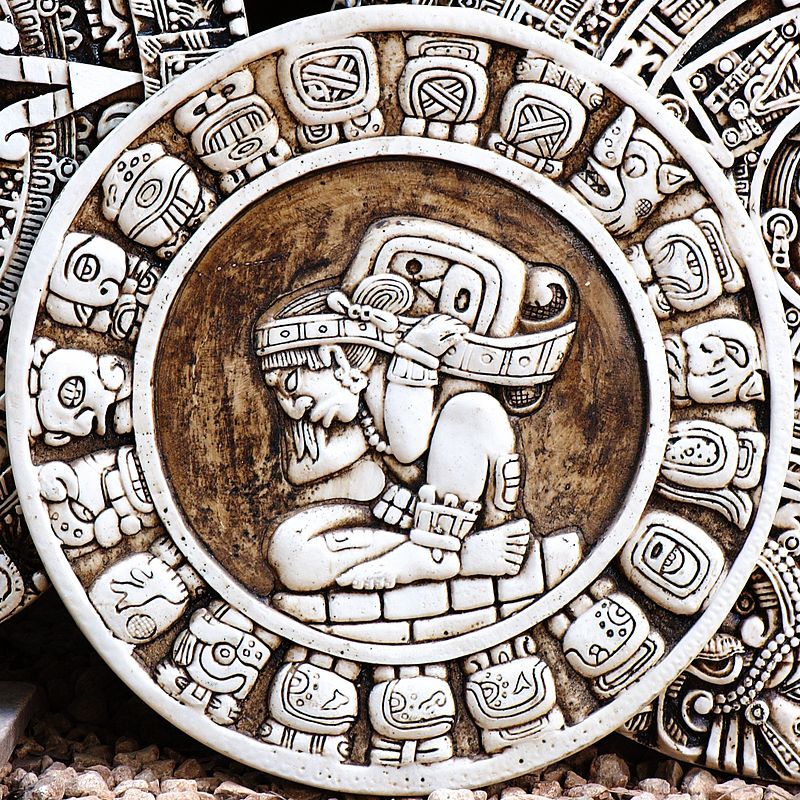
The Mayan Calendar can be traced back to ancient cultures in Central America around 2000 BCE. The calendar was further refined by the Mayan civilization, and some descendants of the Maya still use the calendar today. The Mayan calendar actually consists of 3 separate calendars. It is likely that the Mayan Tzolkin calendar was originally developed around the cultivation of corn, which was a major part of Mayan culture. Tzolkin comes from the Mayan words tzol, "to put in order" and kin, "day". The Tzolkin calendar aligned the Mayan growing season with the seasons of the Earth and the rains using their growing system, la milpa. The calendar was based on the number of digits on the hands and feet, 20, which is designated as a kal. 20 periods of 13 days, or 260 days, constituted one growing season, and thus the Tzolkin calendar was created. This calendar was also used to time religious and ceremonial events in Mayan culture.
The Maya later developed a solar calendar, based on the time it takes for the Earth to orbit the Sun, called the Haab. This 365 day calendar consists of eighteen 20-day months and a single 5-day month. Each month is associated with a particular personality trait. This calendar is exactly 365 days long, which causes problems when aligned with the Earth's 365.2422 day solar year. The familiar Mayan Long Count is used to track longer periods of time. This astronomical calendar consists of a 7885 year cycle, which the Maya believed marked the destruction of the universe and creation of a new one. These three calendars were used in conjunction to keep track of time in the Mayan civilization.
Sources: "The Origin of the Maya Calendar." Centro de Estudios del Mundo Maya. 2002. http://www.mayacalendar.com/mayacalendar/origen.html. Accessed 7 Mar 2018.
"How Does the Mayan Calendar Work?" 2018. https://www.timeanddate.com/calendar/mayan.html. Accessed 7 Mar 2018.
Image: Wikipedia Commons, public domain. https://commons.wikimedia.org/wiki/Haab_calendar
